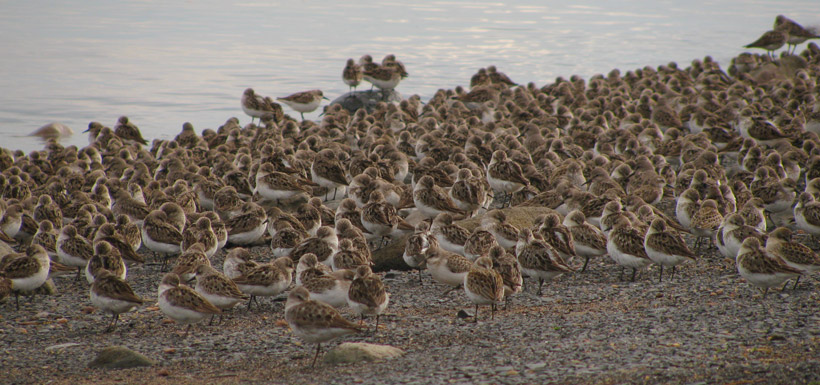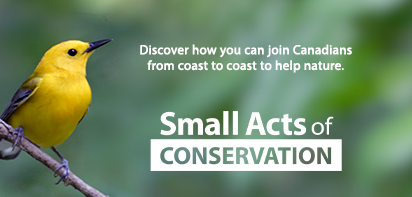Upper Bay of Fundy

Semipalmated sandpipers, NS (Photo by Christine Gilroy)
The Upper Bay of Fundy Natural Area consists of almost 1.2 million acres (484,00 hectares) of Atlantic seaboard costal estuaries, Acadian forest and many freshwater streams, lakes and wetlands.
Included in the natural area is New Brunswick’s portion of the Chignecto Isthmus — the only ecological land bridge that connects Nova Scotia to mainland North America.
There are over 30 COSEWIC listed species in the Upper Bay of Fundy Natural Area, including lichens, freshwater mussels, fish, birds, reptiles and mammals. Peregrine falcons, Robinson’s hawkweed, little brown myotis and Altlantic sturgeon can all be found here.
The Dorchester Cape 1 property, located along the coast of Shepody Bay, is a high priority securement project within the Johnson’s Mills Focal Area. Working with many partners, the Nature Conservancy of Canada (NCC) has protected 472 acres (191 hectares) in the Upper Bay of Fundy Natural Area.
The beach at Dorchester Cape 1 is frequently used during migration by thousands of roosting shorebirds. The property is also a key location for public access to the beach. Controlling access and educating beach users on the sensitivities of migrating shorebirds is a key priority.
Shorebirds commonly found at this location include:
- semipalmated sandpiper
- semipalmated plover
- least sandpiper
- white-rumped sandpiper
- black-bellied plover
- ruddy turnstone
- sanderling
With the world’s highest tides, one of the richest marine environments and the geological uniqueness of the area, the Upper Bay of Fundy is one of the most ecologically diverse landscapes in Canada.



